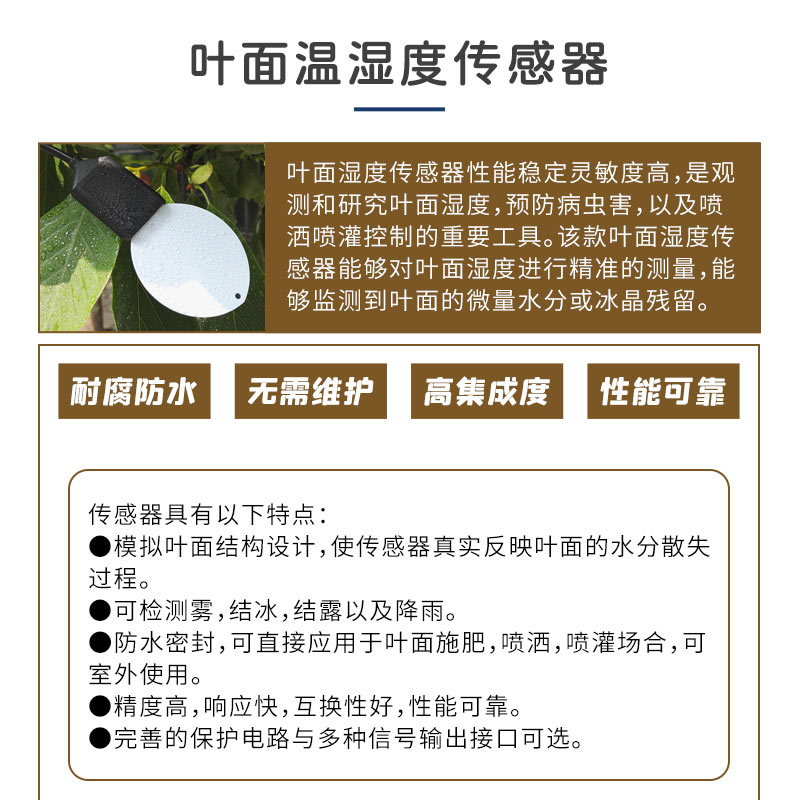Shandong Fengtu IOT Technology Co., Ltd
Sales Manager:Ms. Emily Wang
Cel,Whatsapp,Wechat:+86 15898932201
Email:info@fengtutec.com
Add:No. 155 Optoelectronic Industry Accelerator, Gaoxin District, Weifang, Shandong, China

Sales Manager:Ms. Emily Wang
Cel,Whatsapp,Wechat:+86 15898932201
Email:info@fengtutec.com
Add:No. 155 Optoelectronic Industry Accelerator, Gaoxin District, Weifang, Shandong, China
time:2024-07-02 08:57:27 source:Weather Station viewed:510 time
The Foliage Temperature and Humidity Sensor is a highly accurate measurement tool specifically designed to accurately monitor moisture levels on plant leaves, including tiny water or ice crystals. The shape of this sensor mimics a real leaf, a design that allows it to more realistically simulate and reflect the state of the foliage environment.
It uses changes in the dielectric constant of the upper surface of the mimic leaf medium to detect the presence of moisture or ice, a method that provides accurate measurements. The sensor's low energy consumption makes it suitable for continuous monitoring over long periods of time. The installation process is simple and can be easily suspended from a greenhouse shelf or fixed to a weather station pole for use in a variety of environments.
The level of moisture on the surface of plant leaves plays a key role in their susceptibility to pathogens. When a certain amount of moisture is present on the surface of the leaves, they are more susceptible to fungal and bacterial attack. Especially during disease development, if the leaf surface remains moist, this will provide favourable conditions for pathogen attack. Once the leaves are attacked by pathogens, not only will the health of the plant be affected, but damage may also be caused to the physiological structure of the leaves. Therefore, monitoring and controlling the humidity of plant leaves is important for the prevention and control of plant diseases.
Foliar temperature and humidity sensors are able to accurately measure the level of humidity on the leaf surface and its duration, as well as analysing the effect of the wet state on pesticide efficacy, which is crucial for pest control. This monitoring capability helps to predict disease risk, enabling farmers to implement preventive measures in advance to protect crops from disease.

Micrometeorology is a subtle change in climate caused by factors such as small-scale topography, such as localised wind, fog and frost. In certain sections of transmission lines, these micrometeorological phenomena may be exacerbated by topographical influences, for example, leading to conductor ice...
The fully automatic mini weather station for agriculture is able to monitor the weather elements in real time, mainly: temperature, humidity, wind speed, wind direction, rainfall, air pressure and radiation. By monitoring these elements, the station is able to provide reference data for agricultural...
gas sensors are devices that detect the presence of various gases, detect a particular gas and measure whether that gas is present near the sensor or its amount in the air....
Field water holding capacity is a central indicator for evaluating soil moisture and drought conditions. According to national and water industry standards, soil moisture is the key to determining drought conditions. With the development of automation technology, the number of automatic moisture mon...